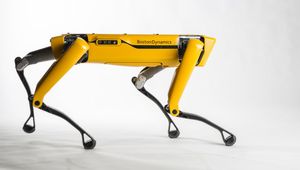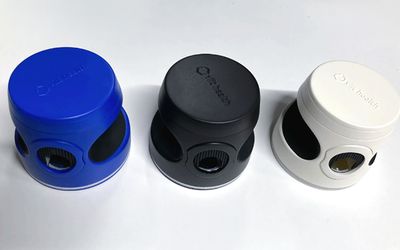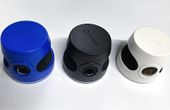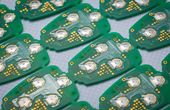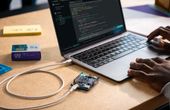Arduino GIGA R1 WiFi
Development platform for dual-core STM32H747XI applications featuring Cortex-M7, Cortex-M4
General
| Product Type | Development Boards |
| Applications | Prototyping & Development |
| Key Features | Cortex-M7, Cortex-M4, Murata 1DX Module, ATECC608A Security |
Technical Specifications
| Microcontroller | STM32H747XI dual Cortex®-M7 + M4 32bit Arm® |
| Radio Module | Murata 1DX dual WiFi 802.11b/g/n 65 Mbps and Bluetooth® |
| Digital I/O Pins | 76 |
| Communication | UART, I2C, SPI, CAN |
| Operating Voltage | 3.3 V |
| Input voltage | 6-24 V |
| DC Current per I/O Pin | 8 mA |
| Memory | STM32H747XI: 2MB Flash, 1MB RAM |
Overview
The Arduino GIGA R1 WiFi empowers ambitious creators with its advanced features and accessible design. This board, maintaining the Mega and Due form factor, boasts a powerful dual-core STM32H747XI microcontroller, enabling simultaneous execution of Arduino and MicroPython. Seamless wireless communication via Wi-Fi and Bluetooth is ensured by the Murata 1DX module, with ATECC608A security.
Enhanced connectivity includes 4 UARTs, 3 I2C, 2 SPI, and 1 FDCAN ports. The board offers 76 GPIO pins, accessible from both sides, alongside VRTC and OFF pins for RTC battery and shutdown. Integrated connectors like USB-A, 3.5mm audio jack, USB-C, JTAG, and a camera connector simplify project development. Supporting 6-24V input, the GIGA R1 WiFi surpasses its predecessors, making it ideal for diverse, high-performance applications.
Features of Arduino GIGA R1 WiFi
The Arduino GIGA R1 WiFi expands the capabilities of the Arduino ecosystem with a powerful dual-core microcontroller, wireless connectivity, and multiple I/O options. Let’s explore some of its salient features:
Microcontroller and Processing Power
The Arduino GIGA R1 WiFi is powered by the STM32H747XI, a dual-core 32-bit microcontroller that enhances parallel processing capabilities. It consists of a Cortex®-M7 core running at 480 MHz and a Cortex®-M4 core operating at 240 MHz, allowing developers to run MicroPython on one core and Arduino code on the other. This configuration improves multitasking efficiency and real-time processing for demanding applications such as robotics, audio processing, and industrial automation. The board features 2MB of Flash memory and 1MB of RAM, enabling large program storage and efficient data handling.
Wireless Communication and Security
The Murata 1DX module provides Wi-Fi 802.11b/g/n (65 Mbps) and Bluetooth® connectivity, facilitating remote control and IoT applications. The board supports seamless integration with Arduino IoT Cloud, making remote monitoring and data exchange more accessible. For security, it features the ATECC608A secure element, which ensures encrypted communication, secure authentication, and protection against unauthorized access.
Hardware Interfaces and Expandability
The GIGA R1 WiFi includes 4 UARTs, 3 I2C ports, 2 SPI ports, and 1 FDCAN interface, allowing flexible connectivity with external devices, sensors, and industrial control systems. It features 76 digital I/O pins, 12 analog input pins, 2 DAC outputs (DAC0/DAC1), and 12 PWM-capable pins. Additional VRTC and OFF pins enable external battery support for real-time clock retention and controlled board shutdown. The 3.3V operating voltage should be considered when interfacing with peripherals, as improper voltage levels may require level shifters.
Connectors and Power Management
The board integrates multiple connectivity options to enhance usability. It includes a USB-A port for HID devices and mass storage, a USB-C port for power, programming, and HID emulation, and a 3.5mm audio jack connected to DAC0, DAC1, and A7 for audio applications. A 20-pin Arducam camera connector and a JTAG debugging interface provide additional flexibility for vision-based projects and low-level debugging. Unlike its predecessors, which supported up to 12V, the GIGA R1 WiFi operates within a 6-24V input range, offering higher voltage tolerance for diverse power sources.
Applications
The dual-core architecture and enhanced connectivity of Arduino GIGA R1 WiFi enable diverse applications. High-throughput data acquisition and processing are facilitated by the STM32H747XI, suitable for real-time sensor fusion and complex control systems. The integrated Wi-Fi and Bluetooth modules support IoT deployments, enabling remote monitoring and data logging. The multiple communication interfaces, including UART, I2C, SPI, and FDCAN, allow for integration with various peripherals and industrial protocols. The on-board audio jack and DACs support audio processing applications, while the camera connector allows for image capture and processing. Furthermore, the higher voltage tolerance and numerous GPIO pins make it applicable for robotics and automation requiring precise control and extended I/O.
References
Arduino Pro [Internet]
